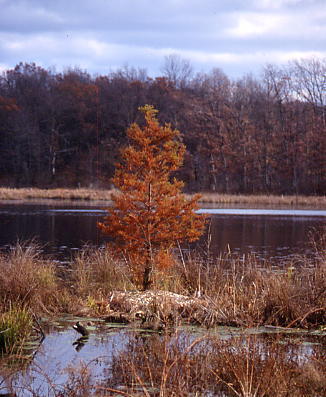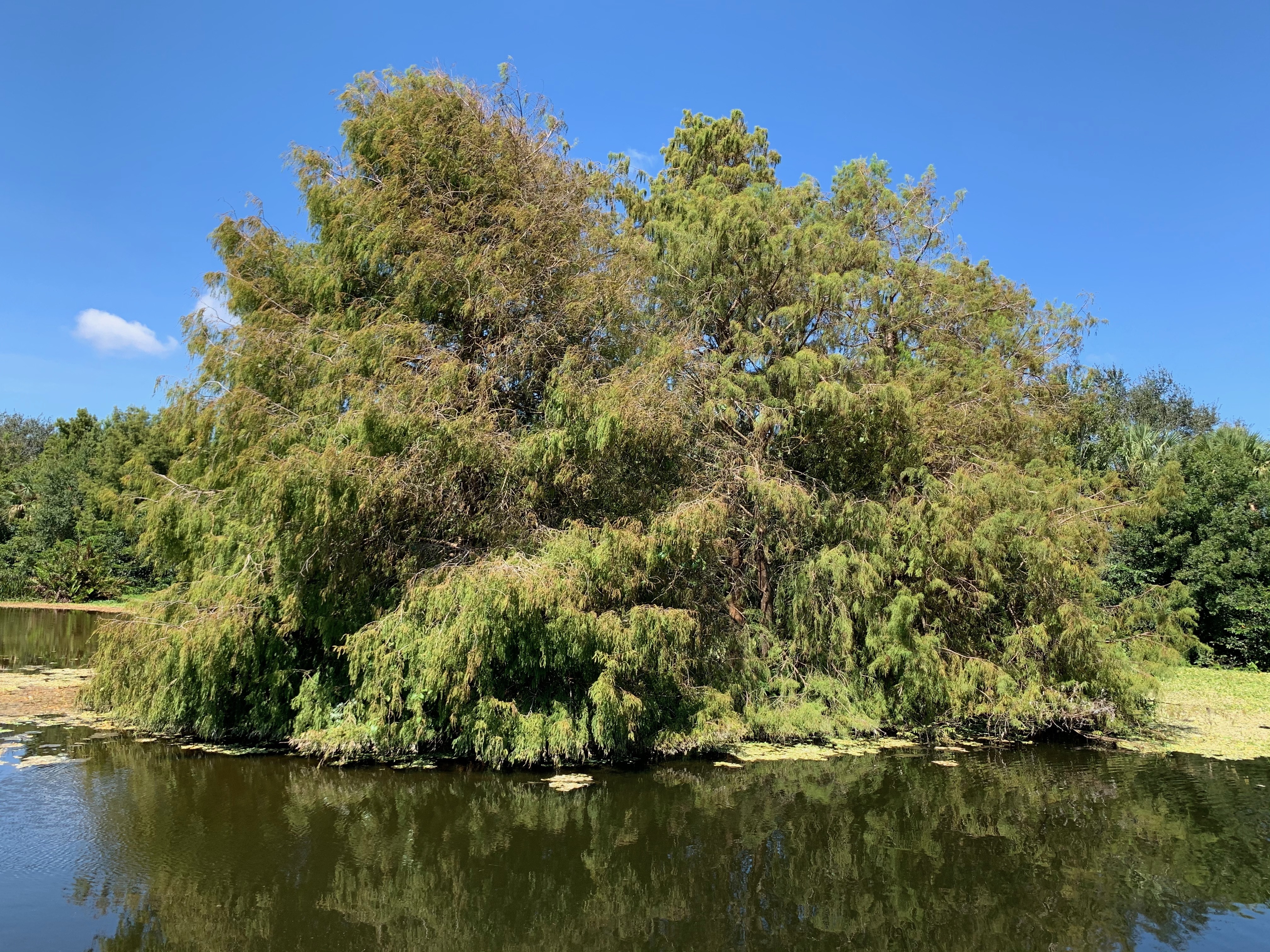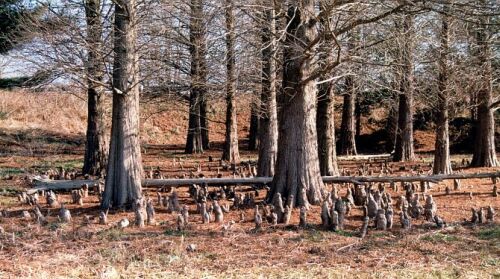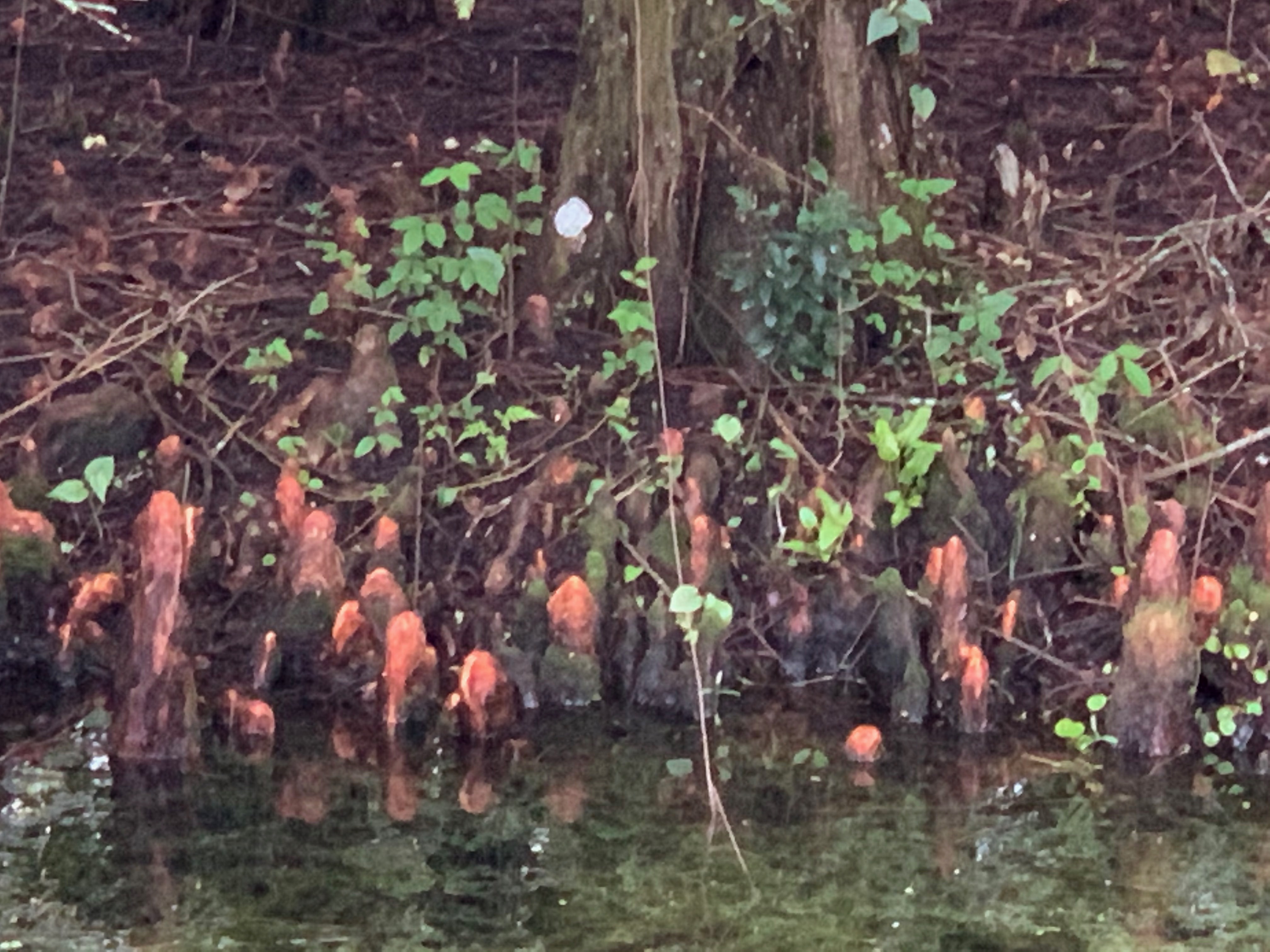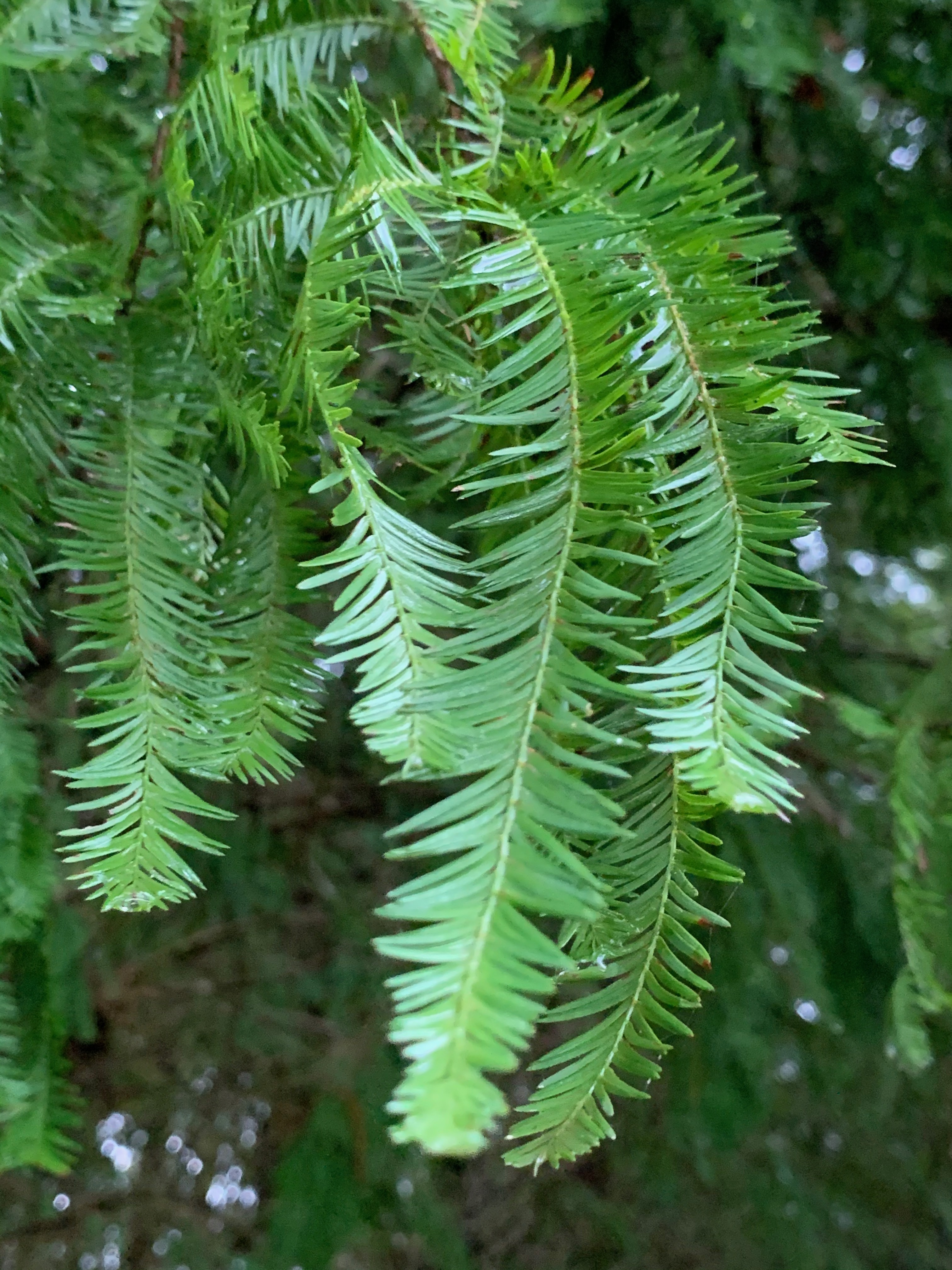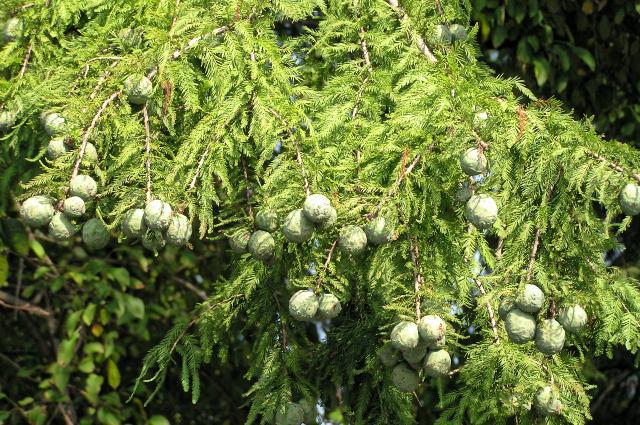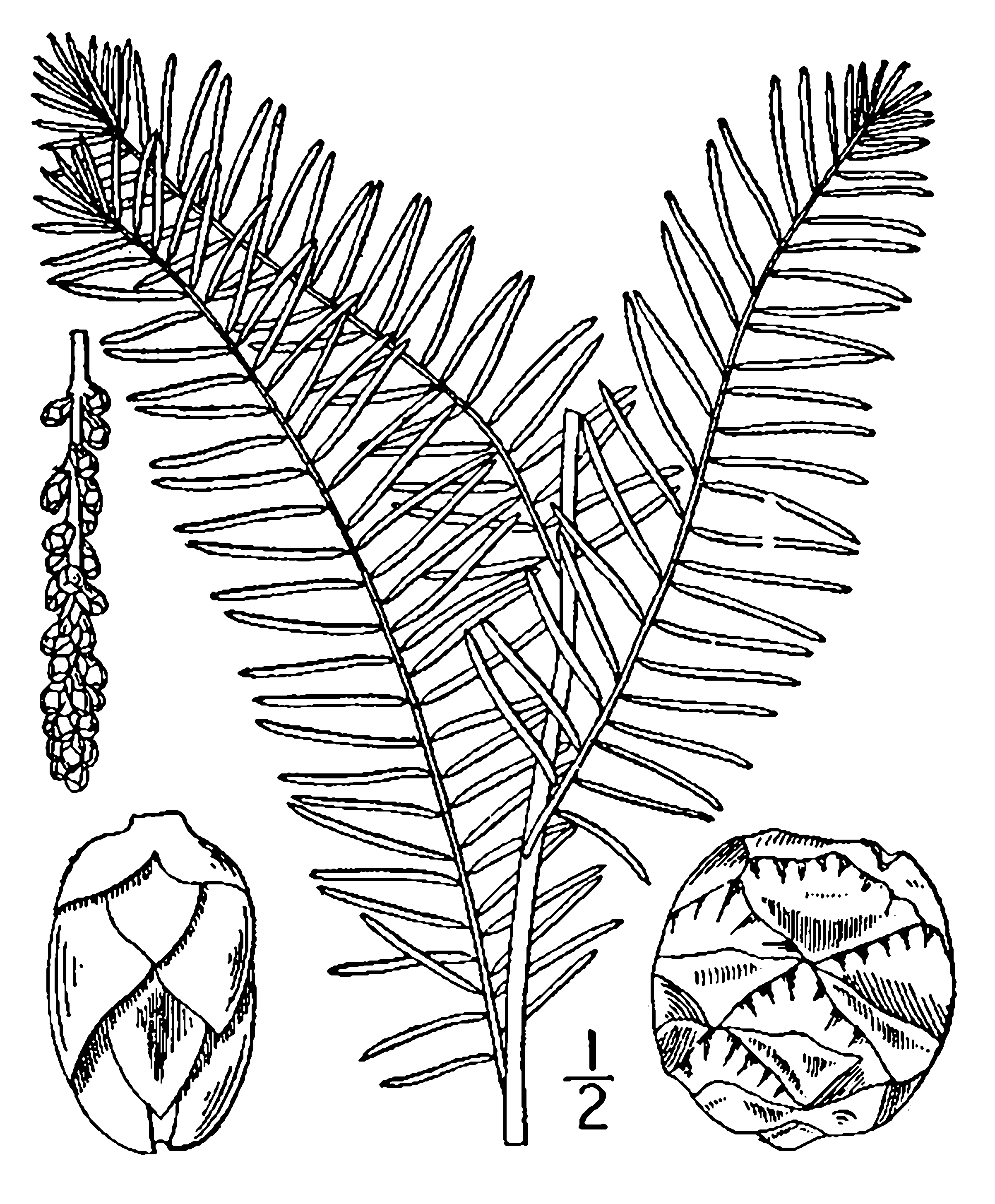
Its deciduous foliage is arranged in two flat flanks, similar to Taxus with a delicate, feathery appearance. The fresh, yellow-green needles in spring darken for summer and then turn russet in fall. The roots develop cypress knees when grown near water, or with plenty of moisture.
[ Sandra McLean Cutler, in Dwarf & Unusual Conifers Coming of Age A Guide to Mature Garden Conifers ] Requiring full sun but tolerant of part shade, it is fast-growing but not a dwarf. The form is narrow when young; pyramidal as it matures with long level branches. Growth is 2-4'/yr, 16 H/8 W, 60'/UH; found in Z5 southeastern USA, New Jersey to Texas.
Taxodium distichum, as described in 1810 by (Linnaeus) Louis Claude Marie Richard (1754 - 1821), in Annales du Muséum National d'Histoire Naturelle vol.16 no.298, is commonly known as bald cypress, cypress, or swamp cypress. The species name is derived from the word distichous, meaning arranged alternately in two opposite vertical rows, describing the nature of the foliar arrangement. Bald cypress is the state tree of Louisiana.
Description. Bald cypress is a deciduous, coniferous species of tree that grows to mature heights of 125 feet (40 m) tall, with a trunk up to 10 feet (3 m) in diameter, measured at breast height; usually with a single straight trunk, a broad base, and often with brown, woody 'œknees' projecting up to 40 inches (1 m) from the ground nearby; forming a pyramidal crown that flattens in old trees.
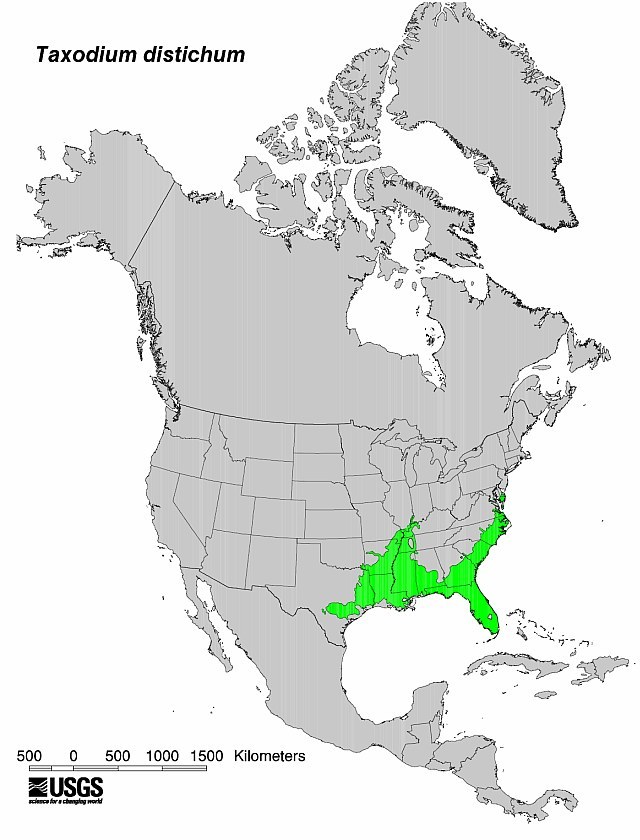
Distribution. This species is native to USA -
Alabama, Arkansas, Delaware, Florida, Georgia, Illinois, Indiana,
Louisiana, Mississippi, Missouri, Kentucky, Maryland, North Carolina,
Oklahoma, South Carolina, Tennessee, Texas, and Virginia; Mexico; and Guatemala; where it can be easily found growing in riparian and wetland habitats.
Hardy to USDA Zone 5 (-10 to -20°F / -23.3 to -28.9°C).
